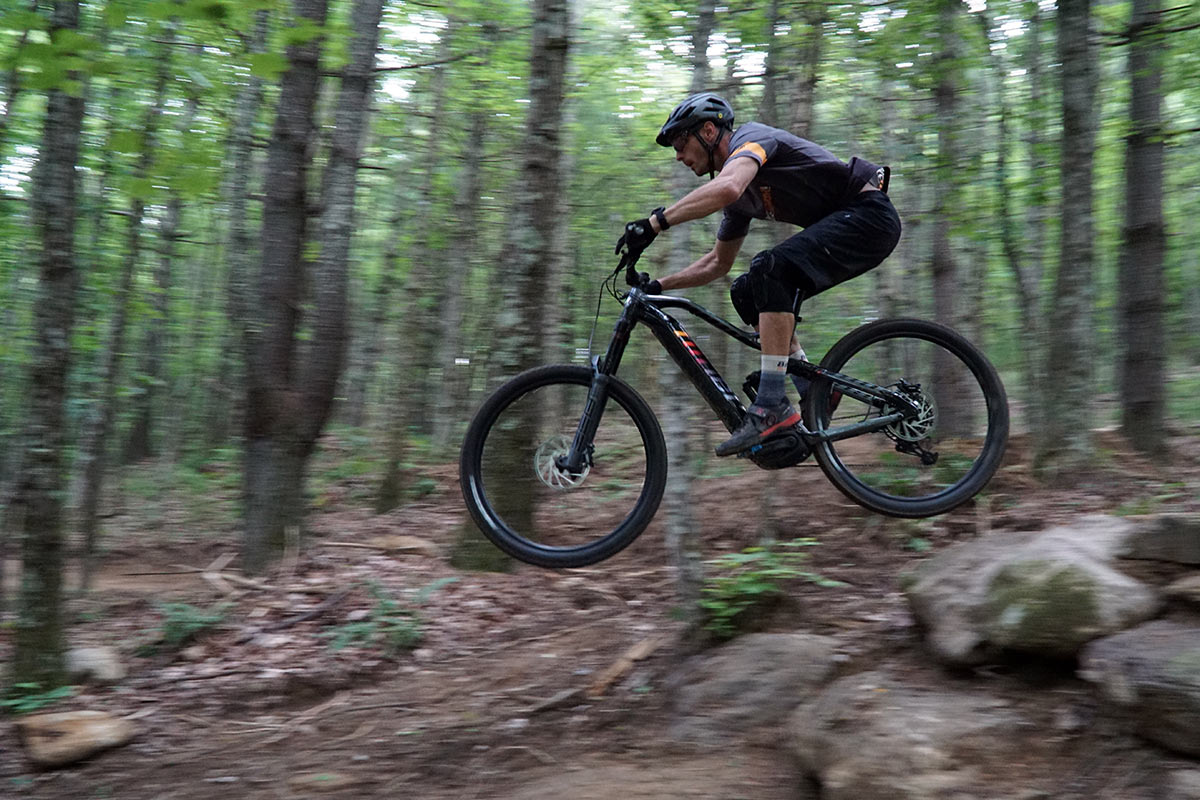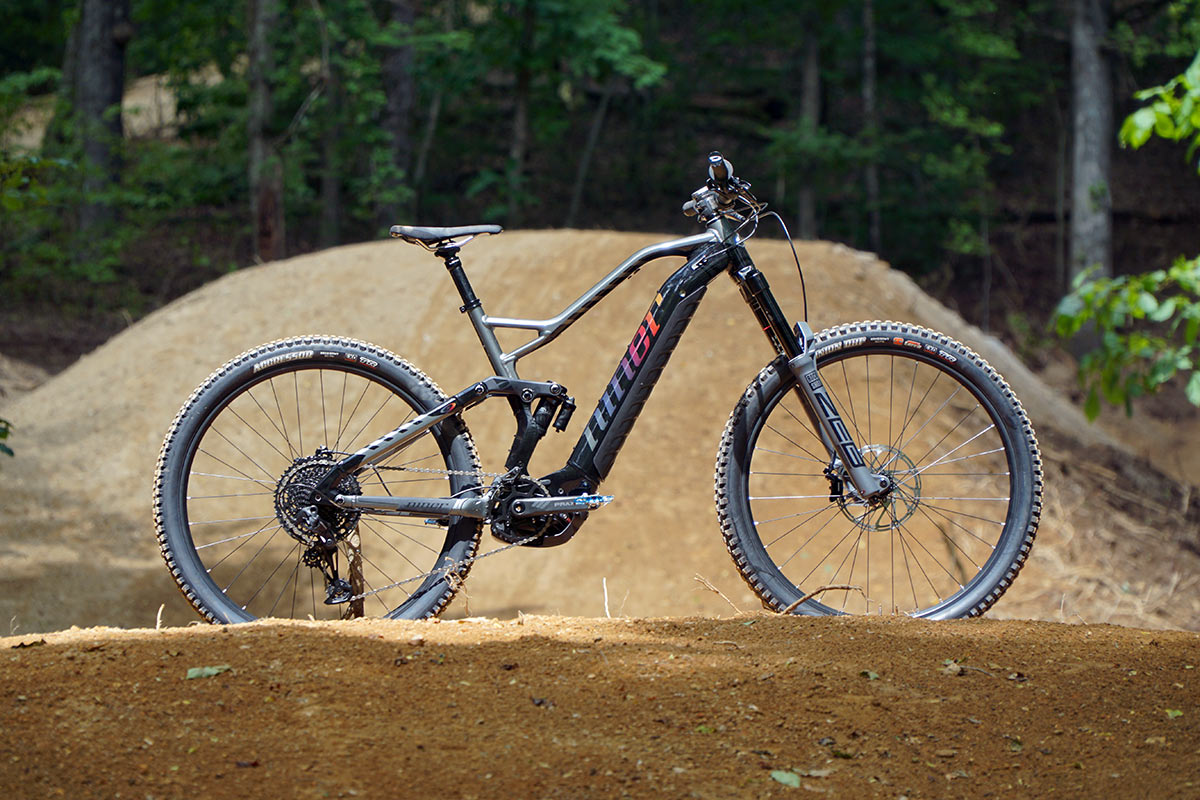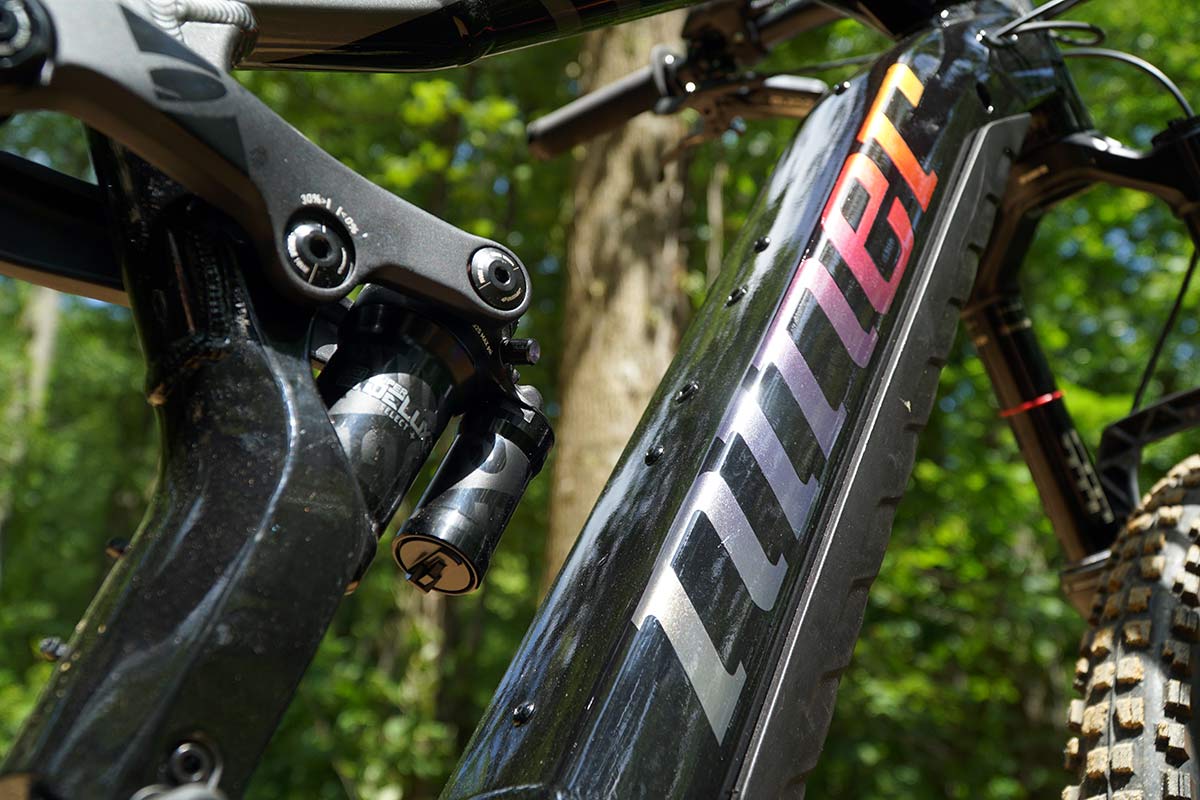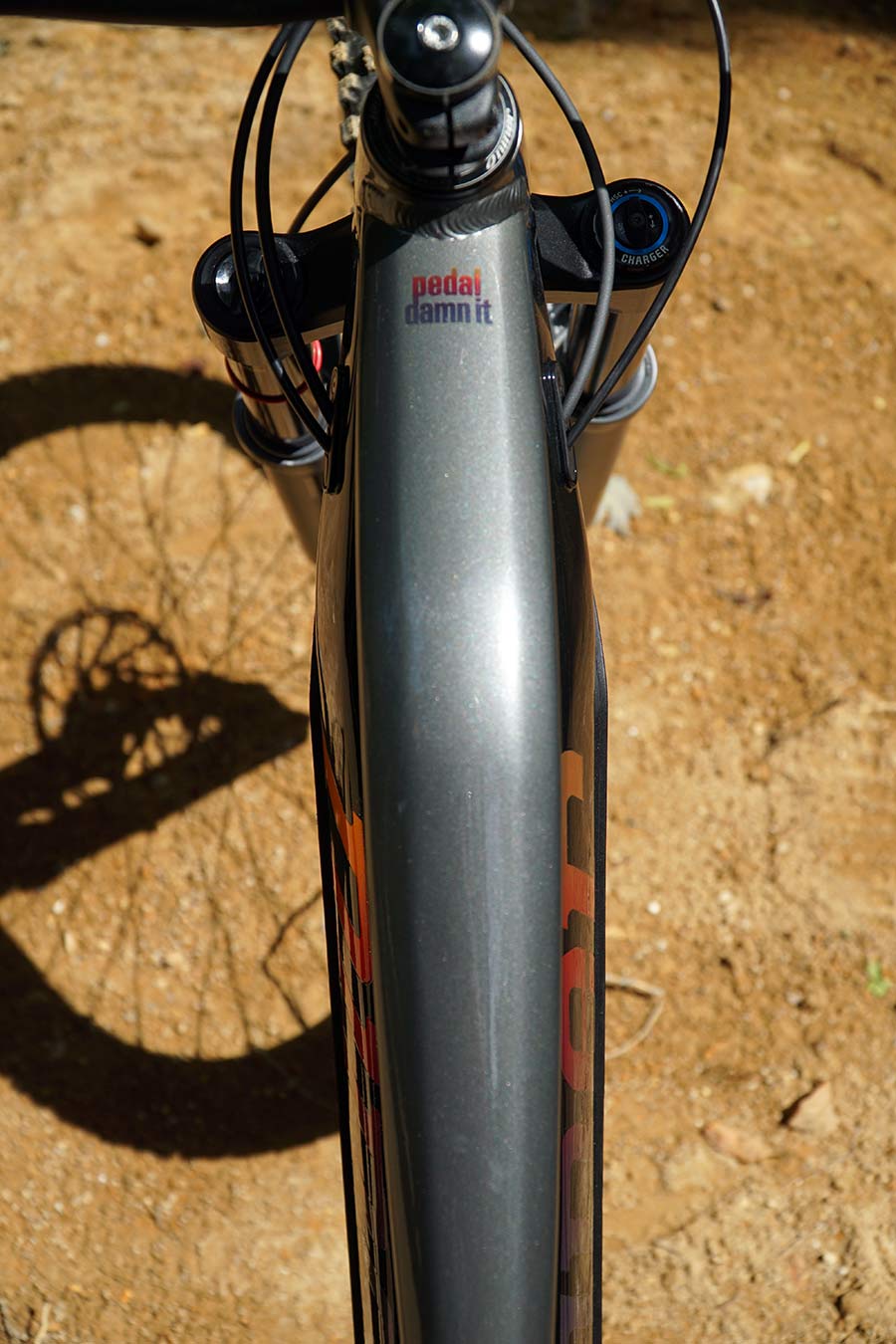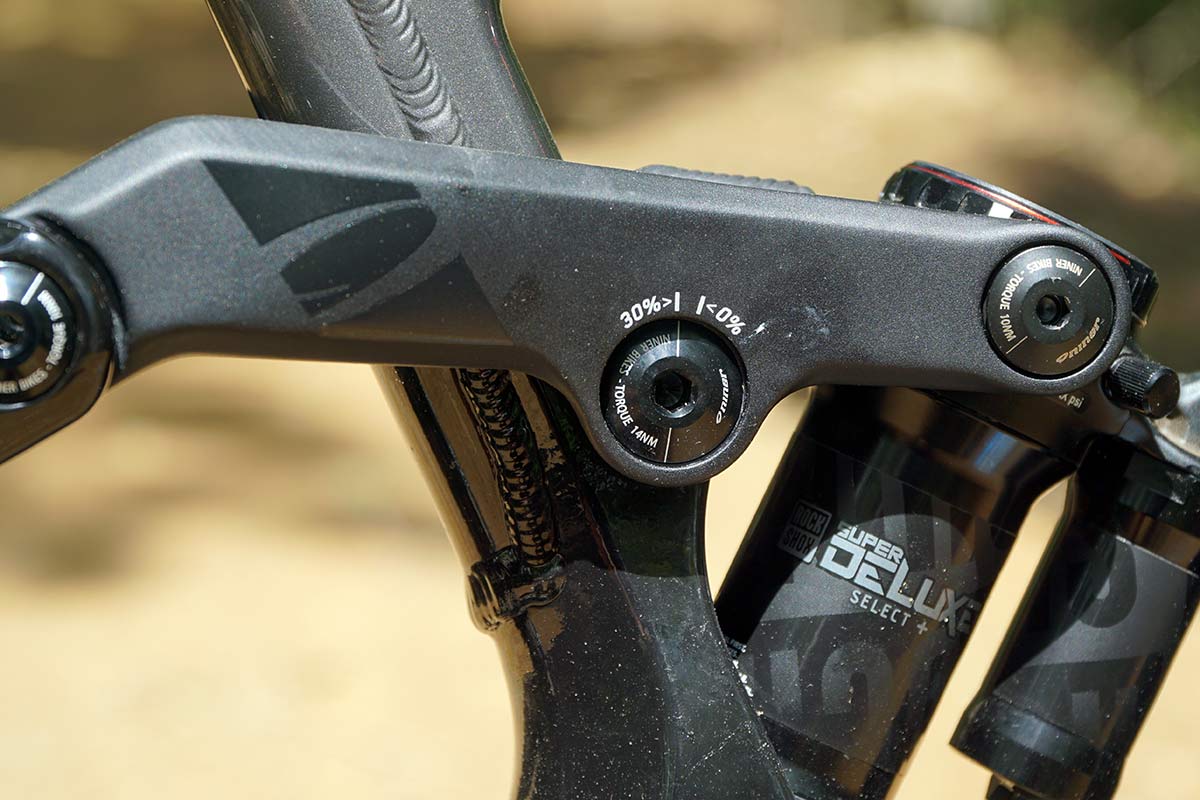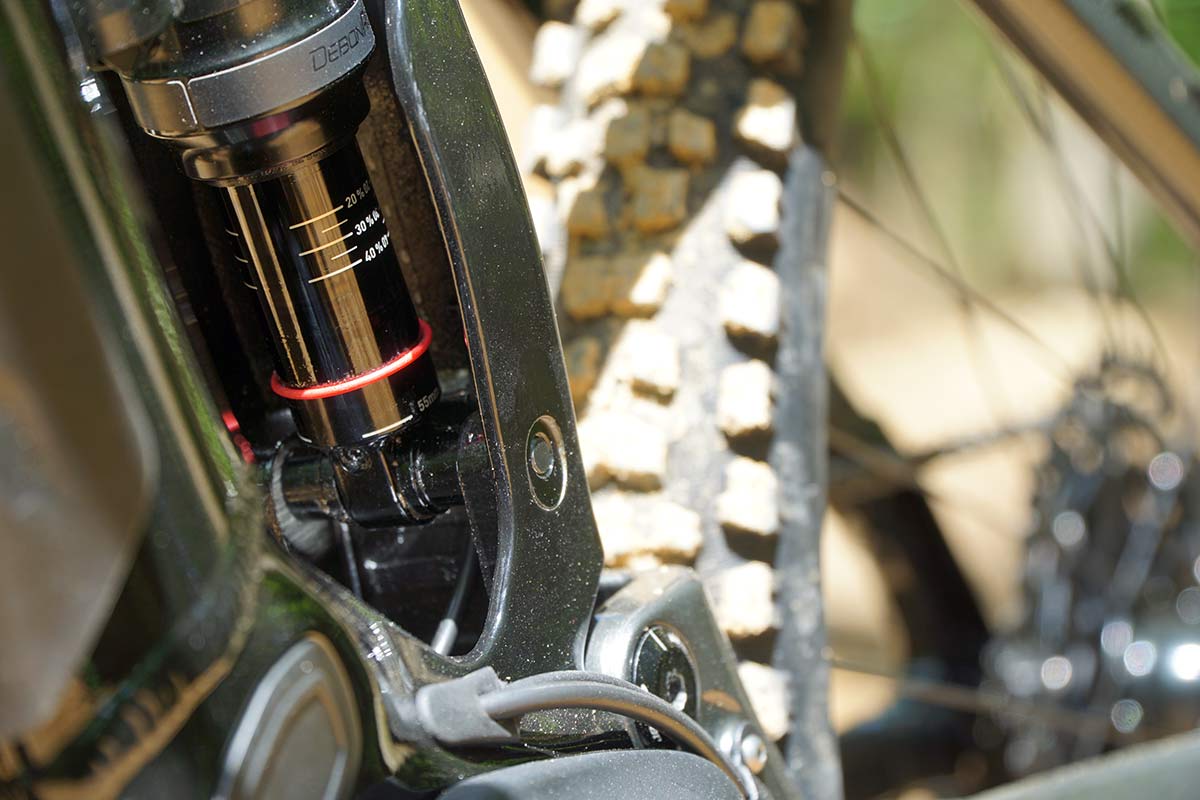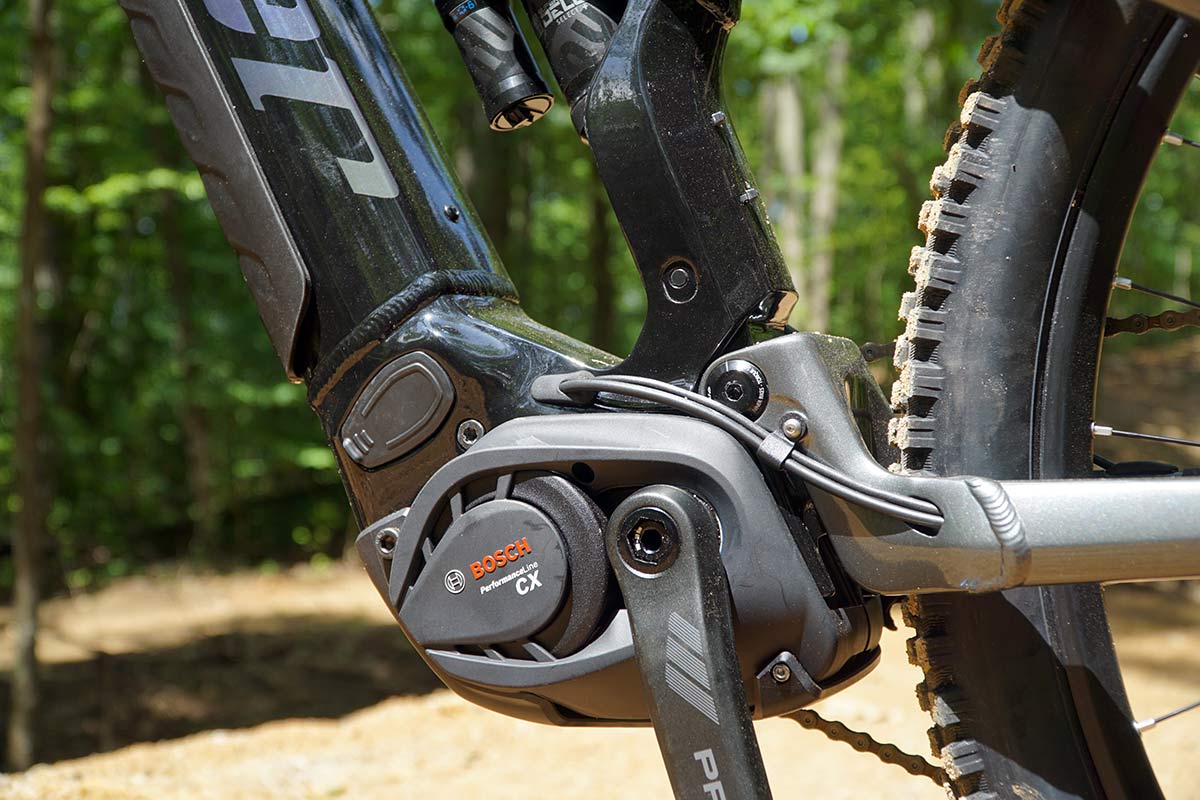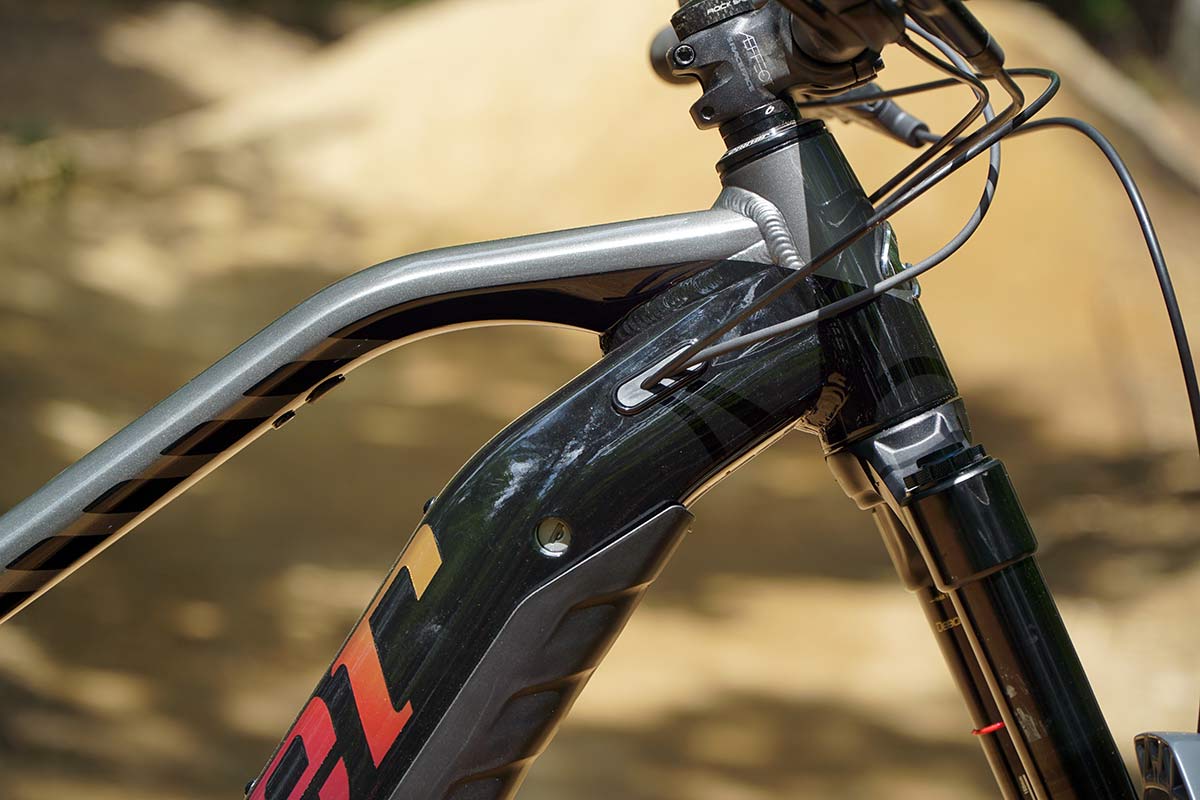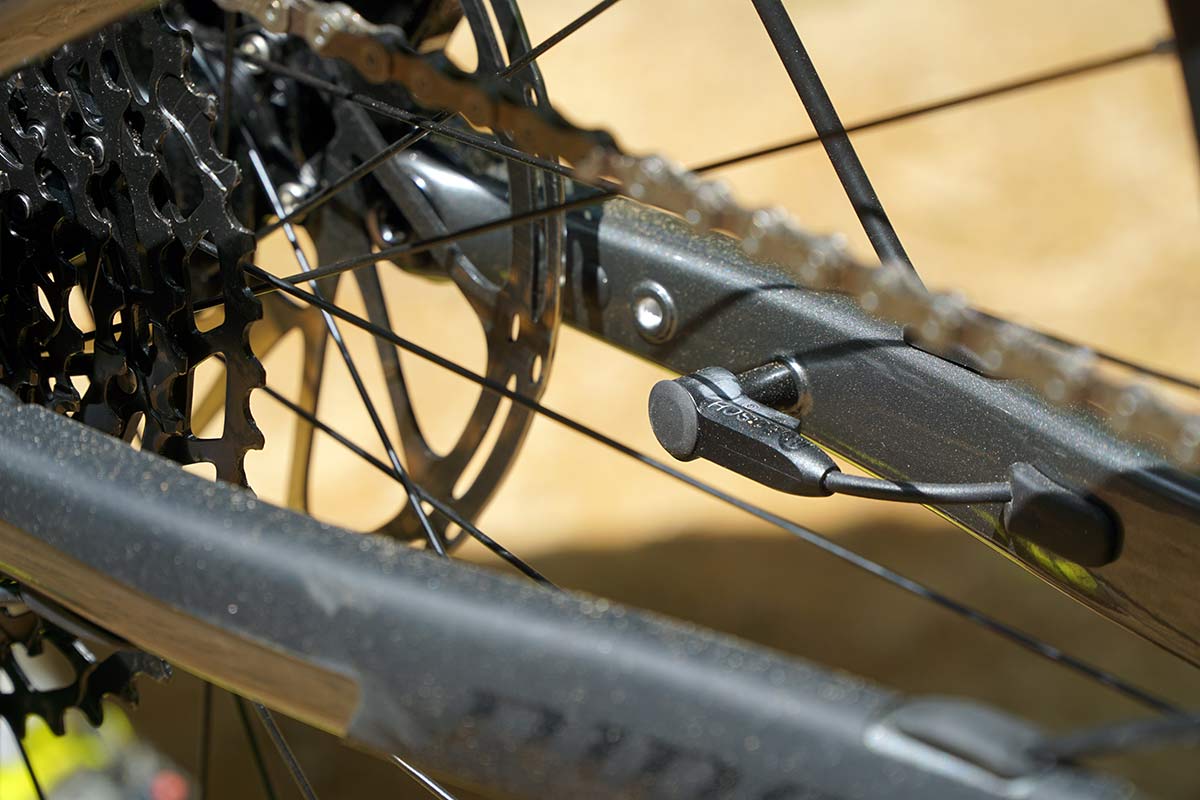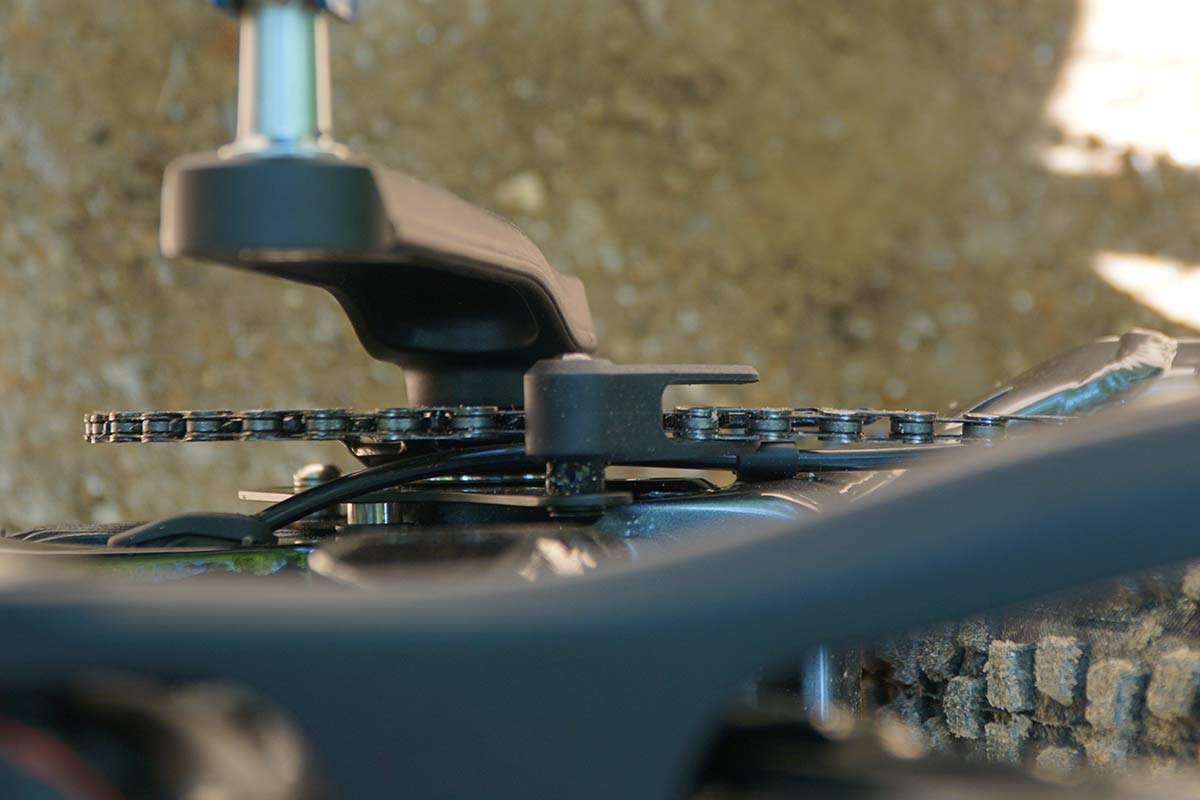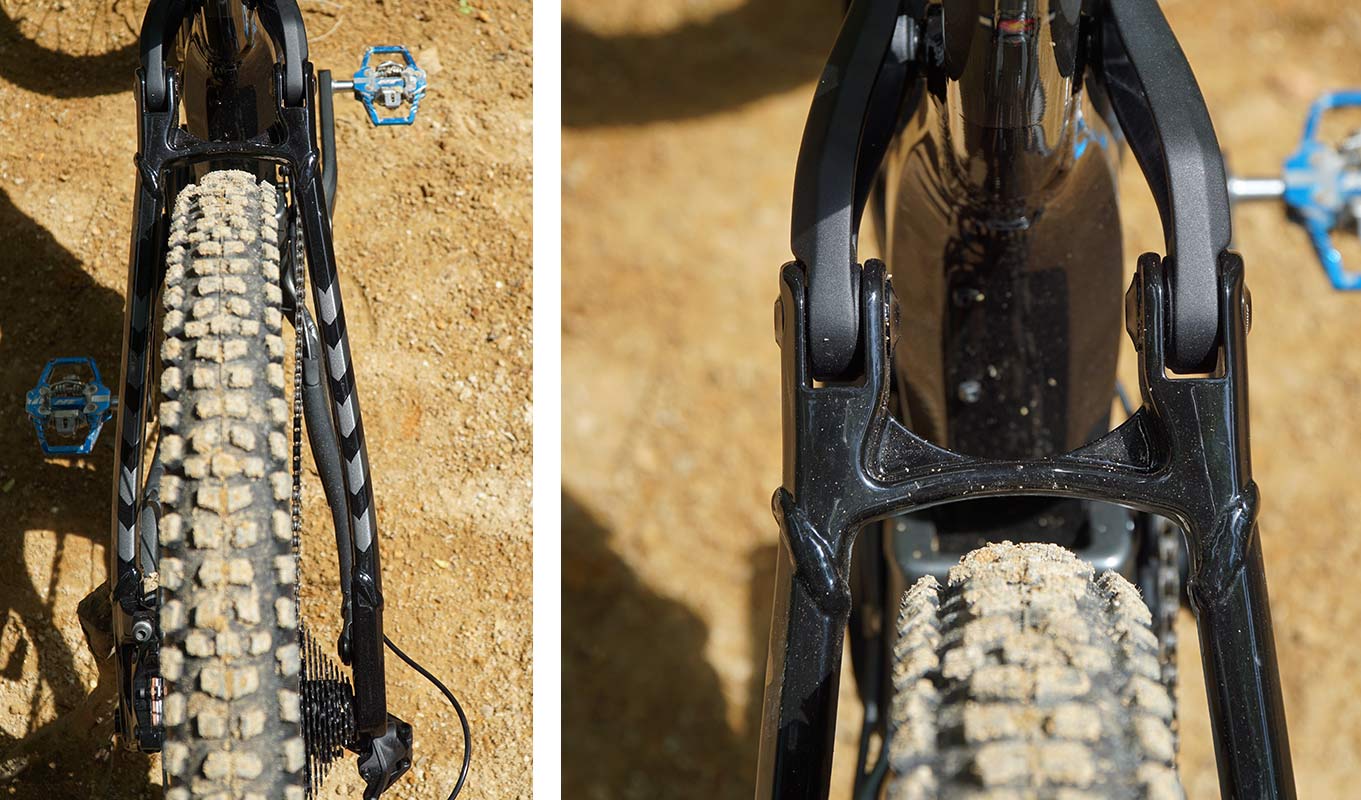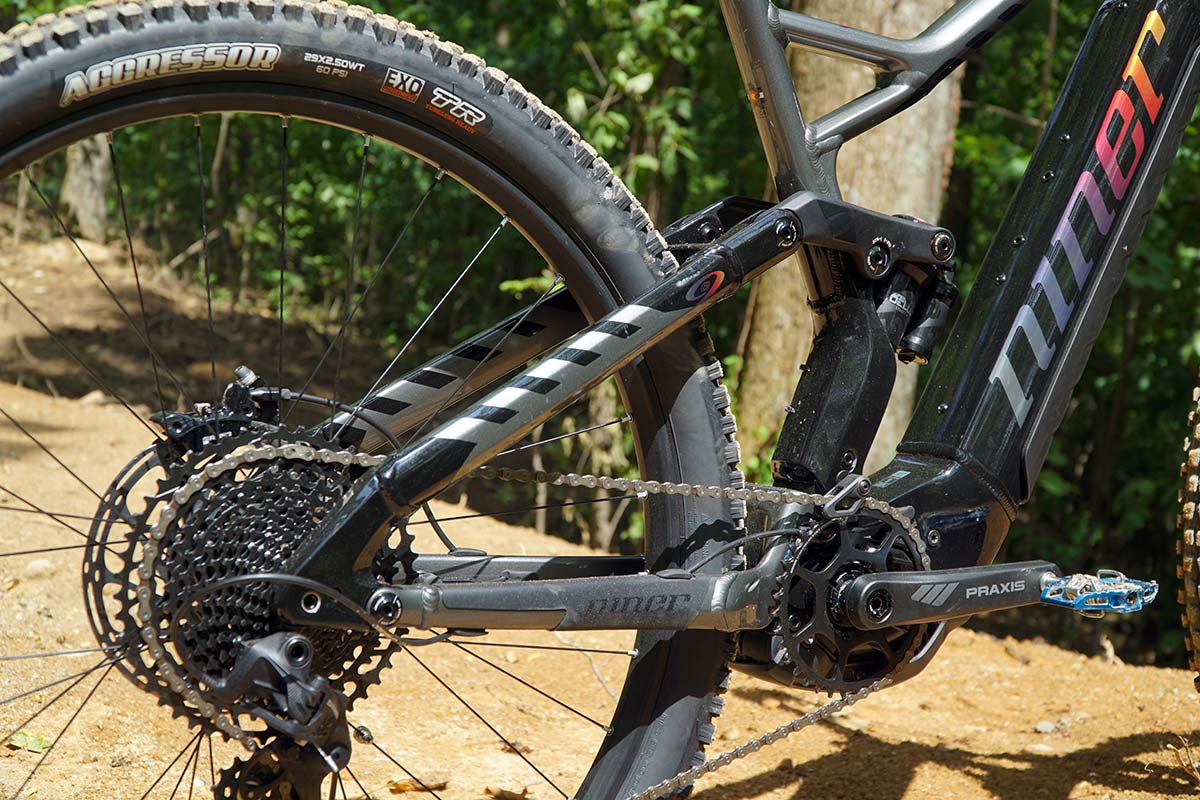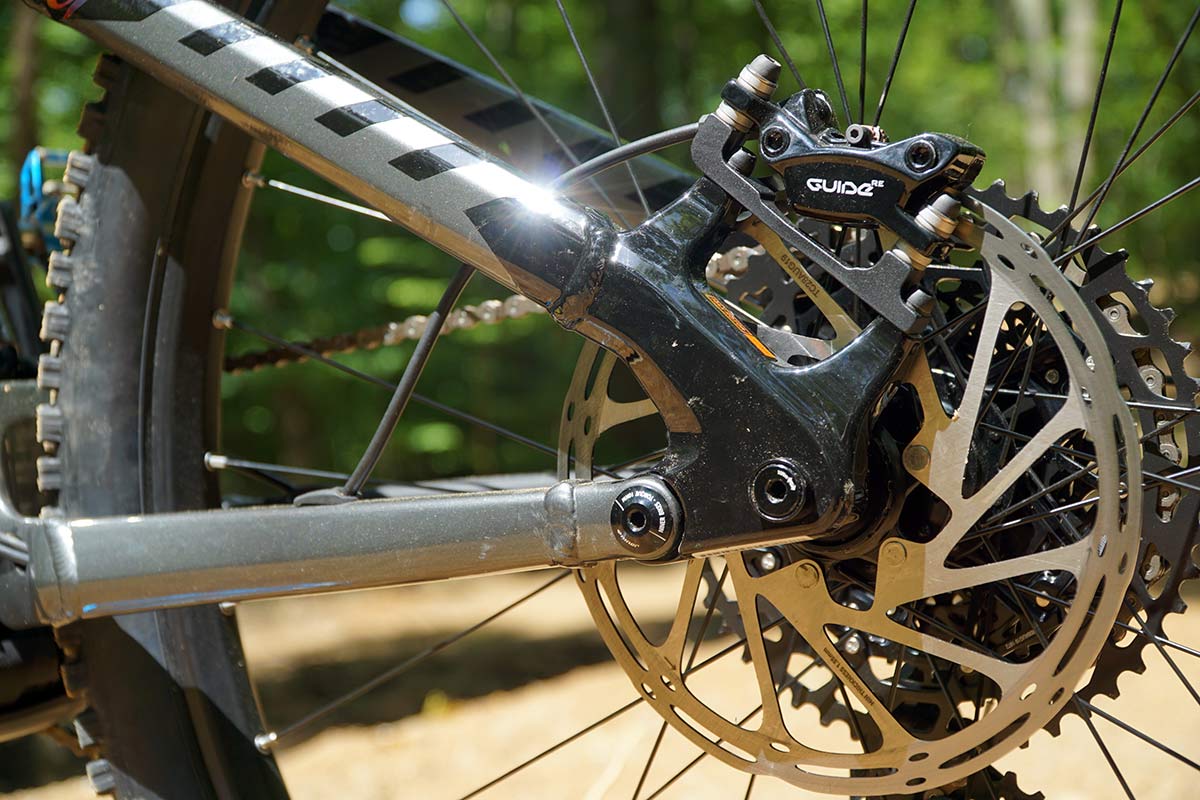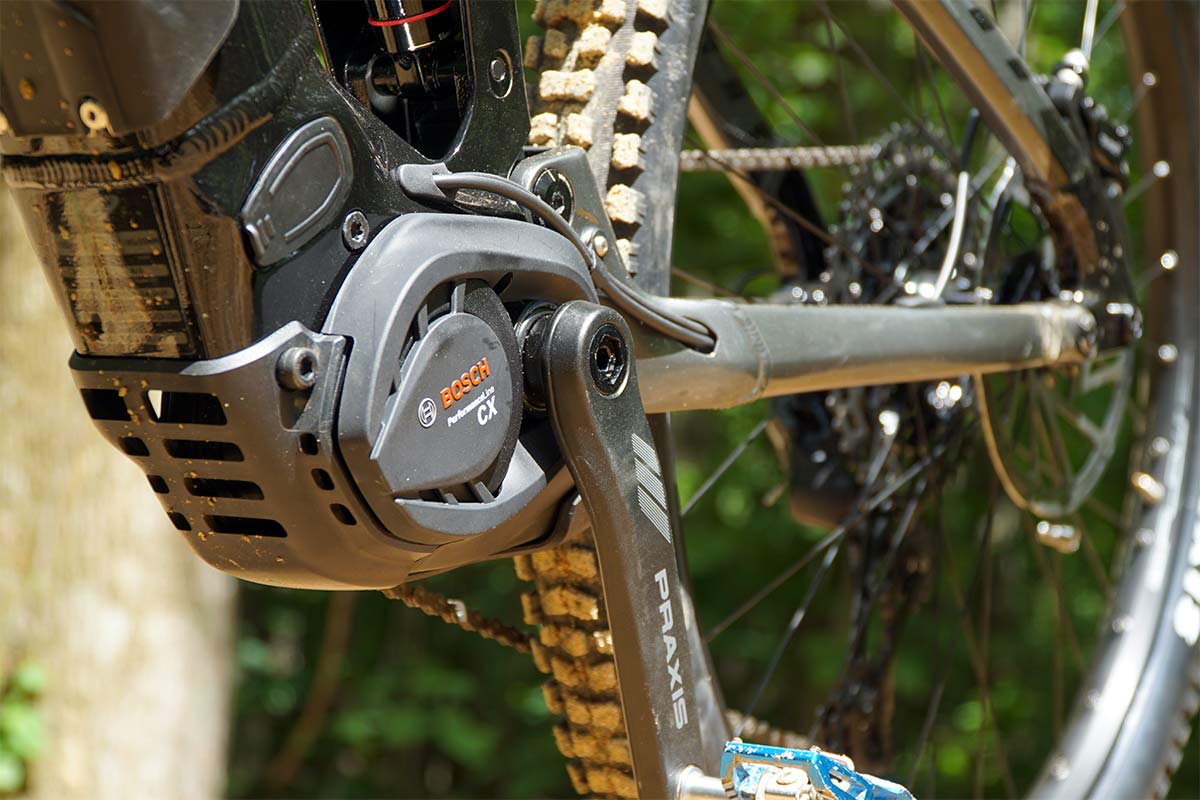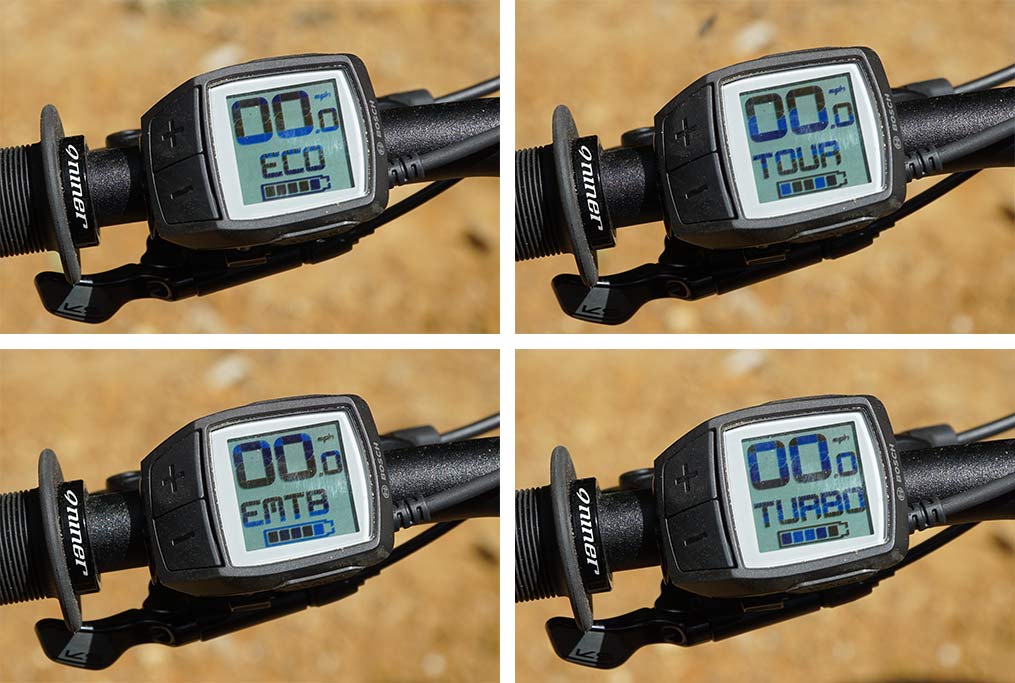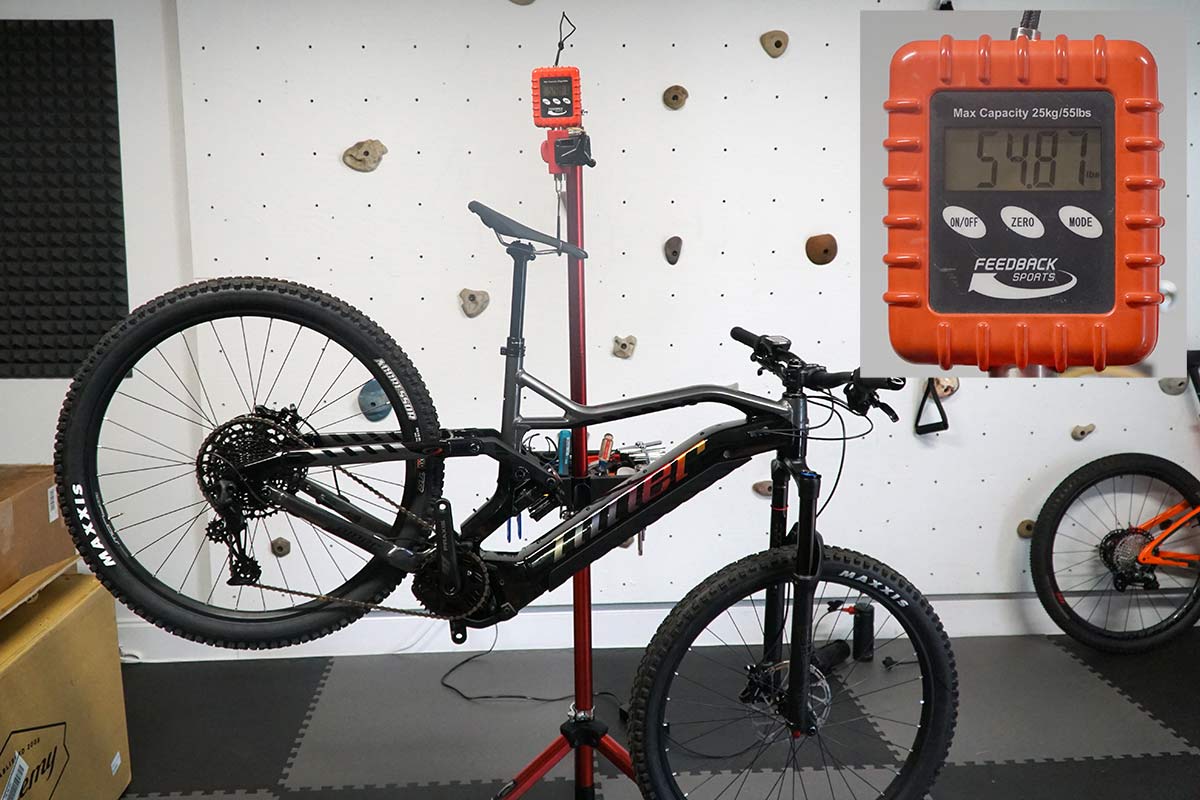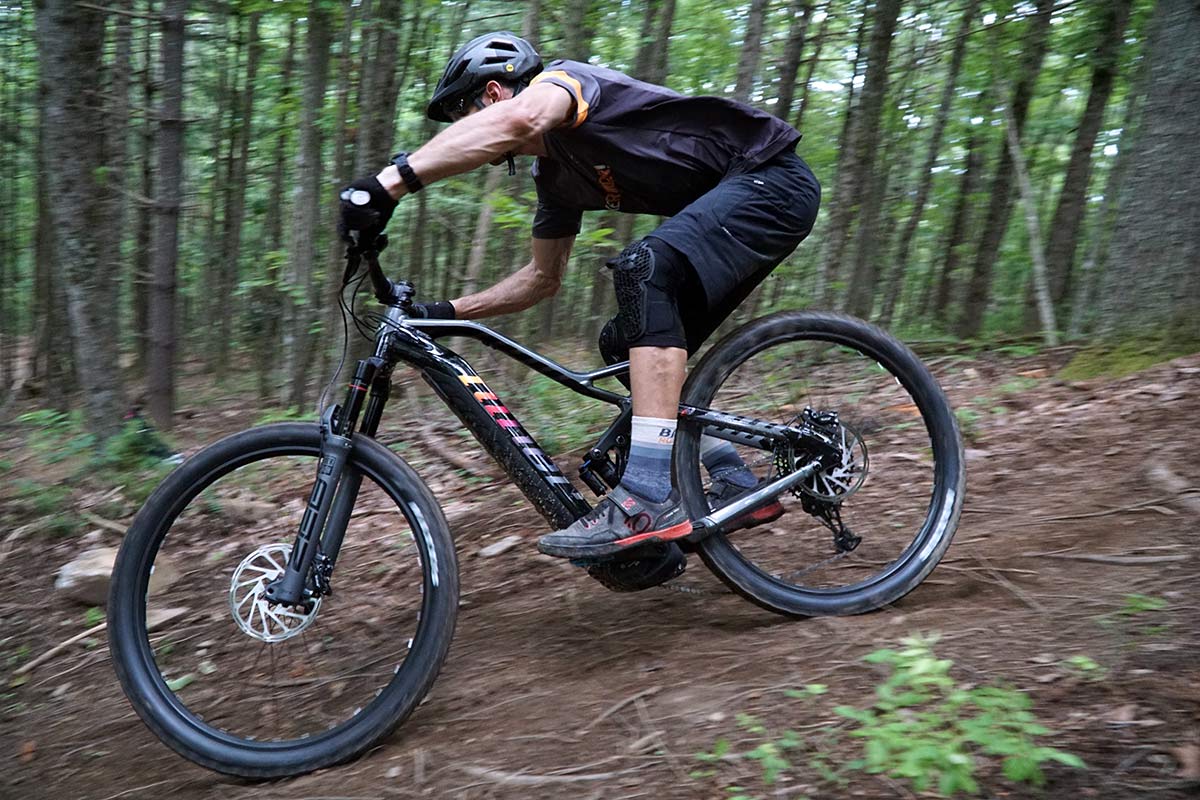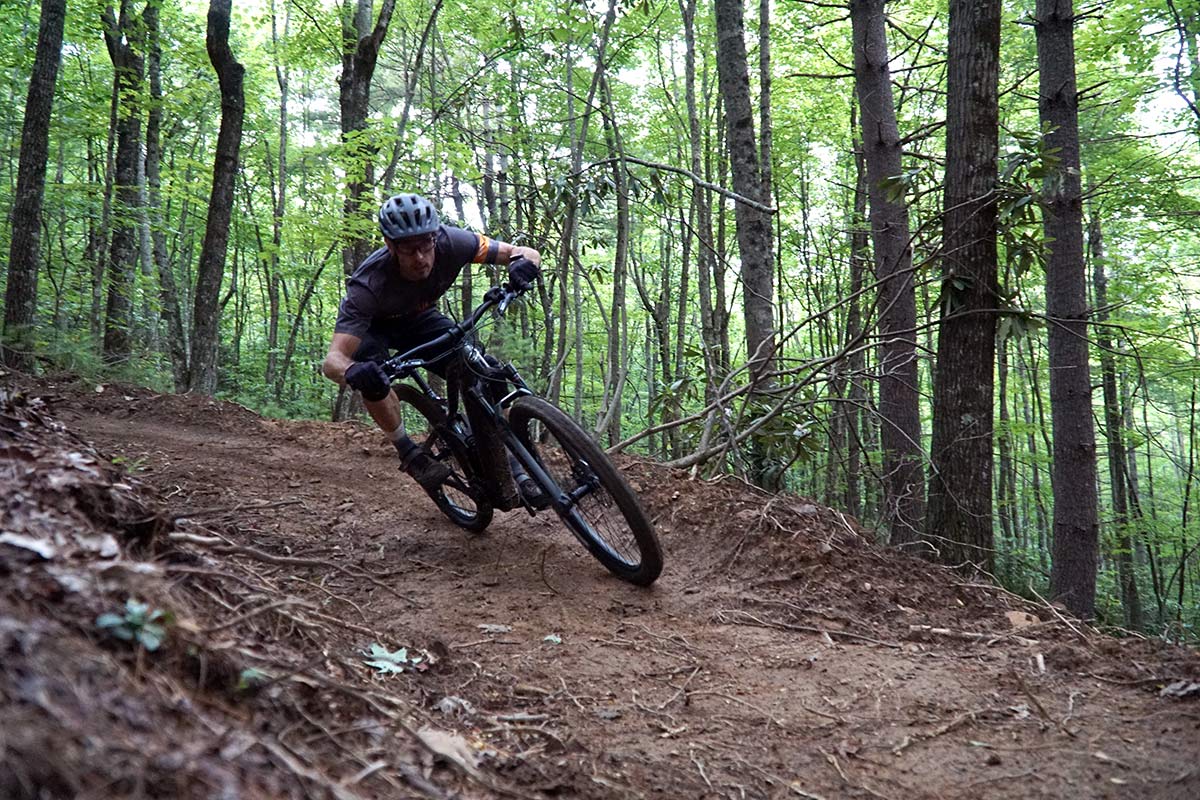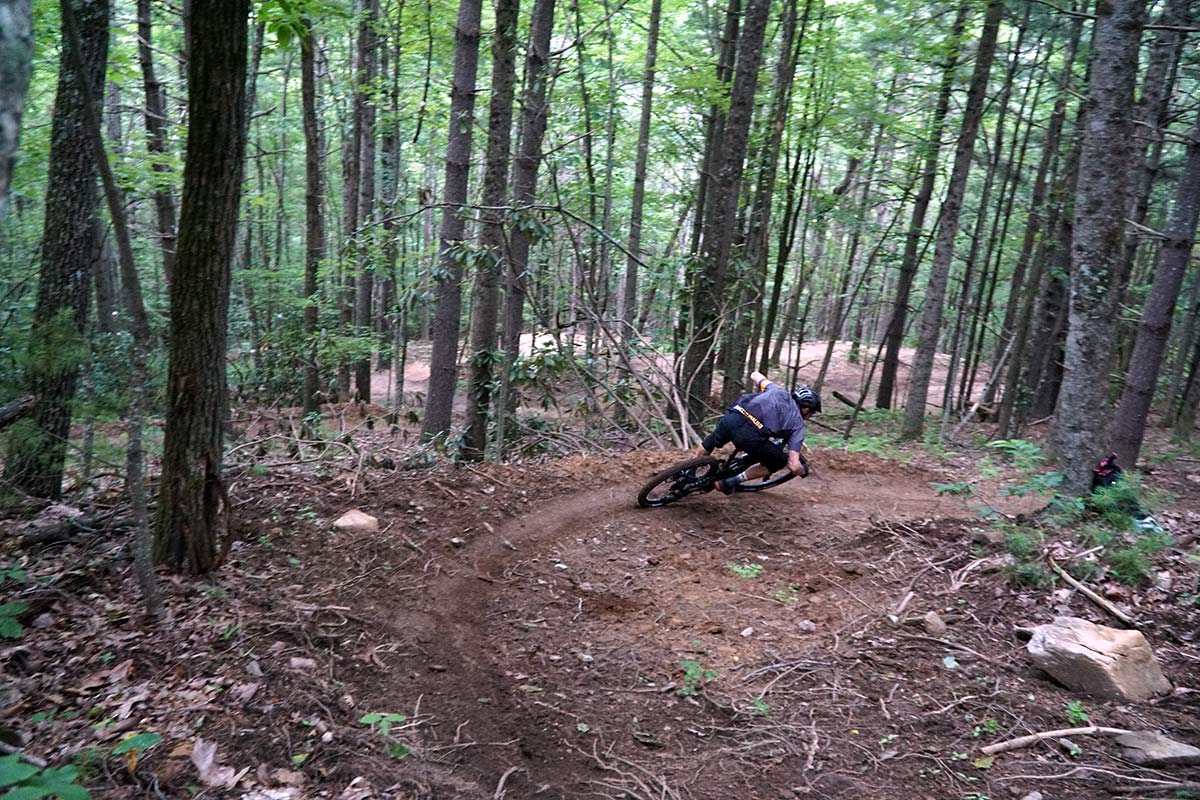My first concern was that Niner had simply slapped their look and logo onto a four-bar suspension frame with a Bosch motor and jumped into the fray. After all, e-bikes are blowing up in general, and e-mountain bikes are a good chunk of that market’s growth. My first rides almost confirmed that notion, suggesting that the Colorado crew had given up what made them special just to launch a pedal assist bike.
Then I started fiddling, and the bike kinda came to life…
A quick look at the RIP e9 details
I covered most of the design and tech in the launch coverage, which includes the longer travel new WFO e9, too. But there are a few additional features and notes worth pointing out here.
Given the choice between the RIP and WFO, I opted for the “mid” travel RIP. Normally, this is at the tall end of bikes I ride simply because of what’s on offer around here. The WFO’s 180mm travel is best suited to bike parks and downhill runs (my opinion), but the RIP seemed like it would work well for a much broader range of trails. And it did.
The downtube is massive when looking at the bike up close, but farther away, it doesn’t seem quite so out of place (as shown in the action photos below). But here’s another perspective:
The central pivot for the upper rocker arm has the 30% sag etched onto it, making it easy to see your sag while on the bike. However, you’ll need to turn that bolt so the line sits at 0% before sitting on it for it to work…it may not be assembled with things lined up.
At the bottom of the shock is the flip chip, and I’d recommend going ahead and putting it in the “Low” position.
The section of seat tube surrounding it is an open-faced shell more than a tube. The dropper seatpost slides behind the shock…
…and is secured with two zip ties. The rear brake and speed sensor wire/hose run over the motor and into the chainstay. The Bosch system’s charging port sits above and in front of the motor. The charger is included and takes a claimed 4.5 hours to fully recharge.
Under the top tube is the Fox Live Valve control box mount, should you decide your overpowered eMTB needs automatic control over the suspension’s lockout. There is an easy to reach switch on the Rockshox SuperDeluxe air shock that switches between, but I almost never used it other than just to see what it would do. It works, but I’d argue it’s almost unnecessary for this application.
The speed sensor detects a magnet on the rear wheel, which sits just in front of the Fox Live Valve’s sensor mounting location.
The rear shift cable runs precariously close to the chainring, but during our testing it never budged, moved or made any contact with the chainring. It has a retention guide to keep it snug against the frame.
Tire clearance is claimed at 29 x 2.6″ max. The RIP e9 comes stock with a Maxxis Aggressor 29×2.5 rear tire and Minion DHF 29×2.5 front.
The switch to a four-bar, Horst Link “FSR” suspension design was my biggest concern. I like Niner’s CVA suspension, which uses a closed rear triangle moving on upper and lower linkages to control the kinematics.
Technically, this has the same number of pivots, but more potential for flex since there’s nothing directly connecting the seat and chainstays like normal. But, with the use of extremely wide pivot locations, high end bearings, and beefy one-piece forged yokes top and bottom, flex was not an issue.
The widely set rear end of the rocker arm did bang the inside of my knees a couple times when getting really rowdy, but not too hard, and not often.
The Bosch Performance CX e-bike drive system is smooth and relatively quiet. Niner’s eMTB bikes are Class 1, so they top out at 20mph for the US market, and 25km/h for much of the rest of the world, Europe in particular.
If you’re used to a Class III bike, this may sound slow, but rest assured, 20mph is faster than you’re ever likely to go on wooded “singletrack”, and using the EMTB or TURBO modes will crush the battery faster.
Which makes them great for shuttling yourself up the mountain then turning it off for the descent. On regular trails where there’s a lot of pedaling, I mostly used Eco and Tour modes, with Eco usually being enough to offset the additional weight of the bike and just ride along with friends on regular bikes. In Tour mode I could leave them in the dust.
Niner RIP e9 eMTB actual weight
I tested a size large Niner RIP e9. The stock build, without pedals, set up tubeless, came in at 54.87lb (24.89kg). Switching to the Rockshox ZEB (also at 160mm travel) and adding pedals probably brought it up to about 56lbs. Sounds heavy, but that’s typical for a bike like this with an alloy frame.
Niner RIP e9 ride review
Check the video at the top of this post to see the bike in action. Niner recommends 30% sag, and I initially set it up somewhere between 30-32% sag. Add up the bike’s weight, my weight, and a pack with water, tools, etc., and proper mountain biking kit, and I’m looking at a sprung load of at least 220lbs.
At that amount of sag, I could bottom out the shock too easily on drops and big, gnarly impacts. Raising it to 25% sag solved that problem, but then it felt a bit harsh on the little stuff on my home trails. While I haven’t tried it yet, I suspect adding one or two volume spacers to the rear shock would help me get the right mix of supple small bump performance and enough end-of-stroke support.
The goal with the rear end’s new suspension design (besides the obvious physical challenge of working around the motor) was to prioritize traction. In that regard, they succeeded. The “e-RIP” holds its ground on rough trails.
Speaking of rough trails, I did have a bit of knocking/rattling noise that turned out to be the battery. My test bike came in about one month prior to the official launch, and the battery cover allowed a bit too much wiggle room inside the down tube. Check the video to see what I mean. This gave the battery room to move, which was audible on rough sections.
Niner says updated battery cover plates are shipping with all production bikes, which fixes that issue. If we get a replacement in to test, I’ll update this review. While not ideal, a dense piece of foam between the cover and top of the battery would also likely fix it.
The pleasantly surprising part of this bike it that the handling toes the line between doing everything well. Like, everything.
Weight the front wheel and it’ll rail around corners on the descents and whip through snaking, tree-lined turns. Maybe not with quite the same agility as a bike half its weight, but admirably well for a bike this big and heavy.
On the climbs, if you do happen to power down and have to go slow, the front end doesn’t flop like many 160mm travel bikes with a super slack front end. This makes it easier to control at low speed, adept at picking its way through tight sections. While there are bikes more purpose built for going down (like, um, their WFO e9), the RIP revealed itself to be a solid all ’rounder that handled the bike park and my local XC trails equally well.
For all the tech specs, pricing and models, check out the launch coverage for both bikes.
